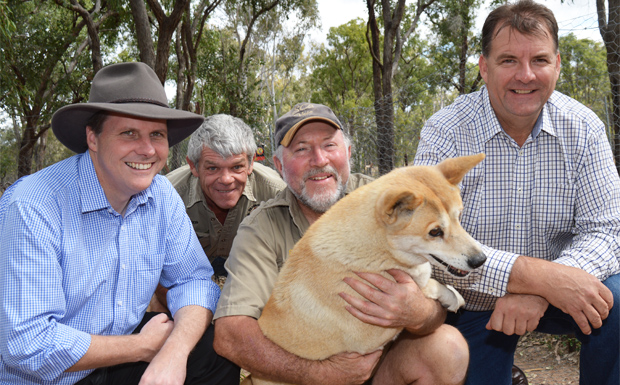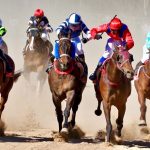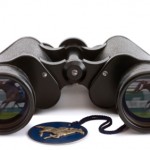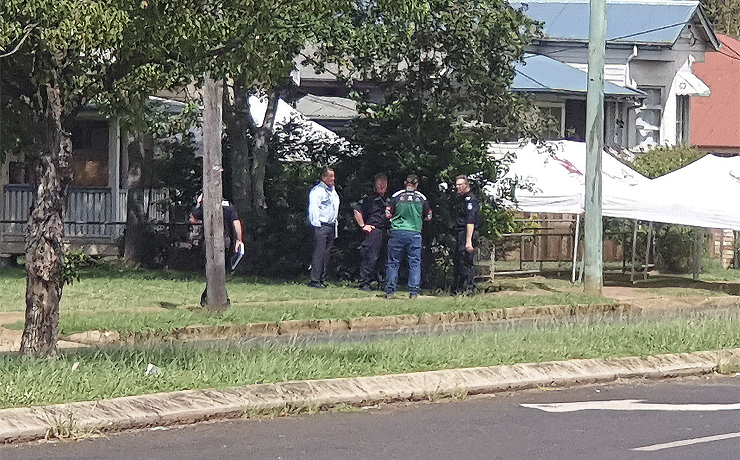
September 8, 2016
It’s not every day that you’ll find a couple of LNP Members of Parliament – and Shadow Ministers, at that – saying nice things about dingoes …
In LNP circles – especially out west – the word “dingo” is usually followed by “baiting”, “trapping” or “shooting”.
But this week Shadow Environment Minister Dr Christian Rowan, the Member for Moggill, and Shadow Housing Minister Stephen Bennett, the Member for Burnett, paid a visit to the Durong Dingo Sanctuary to make friends with some pure-bred dingoes.
Dr Rowan, who succeeded Mr Bennett as Shadow Environment Minister, said many people perceived dingoes as just “bad”, especially graziers and sheep producers who lose stock to predation by wild dogs.
However, he recognised there were others who perceived the native animals as “good”, especially people such as Durong Dingo Sanctuary founder Simon Stretton – known widely as “Dingo Simon” – and Simon ‘s friend, Fraser Coast Wildlife Sanctuary curator Ray Revill.
And that was the reason for the Shadow Ministers’ visit – to hear from the other side about dingos, and learn more about the evidence base that is being developed that demonstrates a positive case for dingos in the natural environment.
Simon and Ray have dreams of developing a dingo sanctuary one day on Fraser Island, ideas which the pair had an opportunity to explain in greater detail to the two Shadow Ministers.
Mr Bennett said the visit to the Durong Dingo Sanctuary was an opportunity for Dr Rowan to hear alternative views “from some strong-willed men” which he could consider when discussing policy development.
“It is a matter of striking a balance since there are other matters that have to be considered, especially in regards to primary producers and other landholders,” Dr Rowan said.
“But I have heard some innovative thinking out of the box, innovative models that recognise the positive aspects of dingoes and what they can do for the environment.”
He pointed to the unexpected positive results which had occurred in Yellowstone National Park in the United States after wolves were reintroduced into the ecosystem.
Ray and Simon may have been persuasive in their pro-dingo arguments, but the greatest advocates were probably the dingoes themselves.
“Honey”, a pure-bred Alpine dingo, had them eating out of her hands (or more accurately, vice versa …)
Related articles
























This has been a first to get any Minister from any Party to make the effort to come out here and see my dingoes. Hopefully they will begin to develop some decent policies to get the dingo’s listing changed from Class 2 Feral Pest to Protected. As it is now, under the Conservation Act, the dingo is classified as a Native Animal while it lives in a National Park, but once it leaves the safety of that, it is then re classified as a wild dog that has to be killed. The contradiction makes a joke with regards to the Legislation. Scientists are now proving the dingo has a beneficial role in the environment that will have a positive affect on farmers’ properties, as a top order predator and their abilities to suppress the numbers of roos, wallabies, rabbits, goats, pigs etc.
It is great to see some positive action from politicians to make an effort to learn about the biodiversity of the dingoes of Australia. This shows very forward thinking into the future of our land, wildlife and ecosystems and not thinking about money and killing, and the meat market and animal export trade. Without the dingoes, feral cats, rabbits, pigs and goats will get out of hands. If the dingoes are used for their biodiversity, they should not need to chase cattle and possible not be so overly concerned with sheep. Dingoes only breed once a year. Dogs can breed 2-3 times a year. Doesnt that tell us something. Dingoes are smart, perhaps they have evolved to not over populate, so there is enough food to go around :) The documentary, ‘Dingoes: Wild dogs at War’ is the best explanation and proof that dingoes are a very special and unique species of Australia. It shows how we can better understand them and protect them not only from lethal wild dog control measures but also from interbreeding with domestic dogs, diluting their gene pool. The only way that dingoes will survive extinction in Australia is to take them off the lethal wild dog control list all over Australia and list them as a protected ‘native’ species Australia wide. It is up to livestock producers to update through education, not through more lethal killing techniques and poisonous chemicals.
The myths about dingoes being good for the environment are totally baseless disney-esque fairy tale! The crazy cat people are also trying to tell us feral cats are good for the environment.
To assert that wild dogs (including the dingo) somehow protect native wildlife lacks any credible scientific evidence whatsoever. The dodgy ‘science’ from the dingo lobby sounds good on the surface, but is so biased and lacking in facts its laughable, but the media and city people fall for it!
Julia Sims, honestly! You say: “Without the dingoes, feral cats, rabbits, pigs and goats will get out of hands.”(sic)
Where’s the evidence to back up this statement? Wild dogs have been shown to not control pigs, rabbits, cats, foxes, horses etc etc in any study that I’ve read. They will kill some of them but haven’t controlled them, except on Islands….and the Qld Govt has now banned dogs being used for this purpose as they correctly assert that dogs are a threat to our native wildlife. If you have enough wild dogs to control feral pigs or rabbits, you have a massive wild dog problem for all our wildlife!
You also propose to protect ‘pure dingoes’ from interbreeding with domestic dogs and to make them native species and take them off the lethal wild dog control list. How exactly do you propose to do stop dingoes (aka Asian Wild Dog) breeding with other dog breeds?
Since the Asian Wild Dog (aka Dingo) arrived here only about 3500 to 5000 years ago via asian traders, it is an introduced pest species! In how many years should we call cattle, sheep, deer, german shepherds, cattle dogs or even cats and foxes native? Wolves didn’t control coyotes in Yellowstone NP either, as the coyotes just changed their habits and they co-exist, just like wild dogs (inc dingoes), foxes and cats do here.
PC